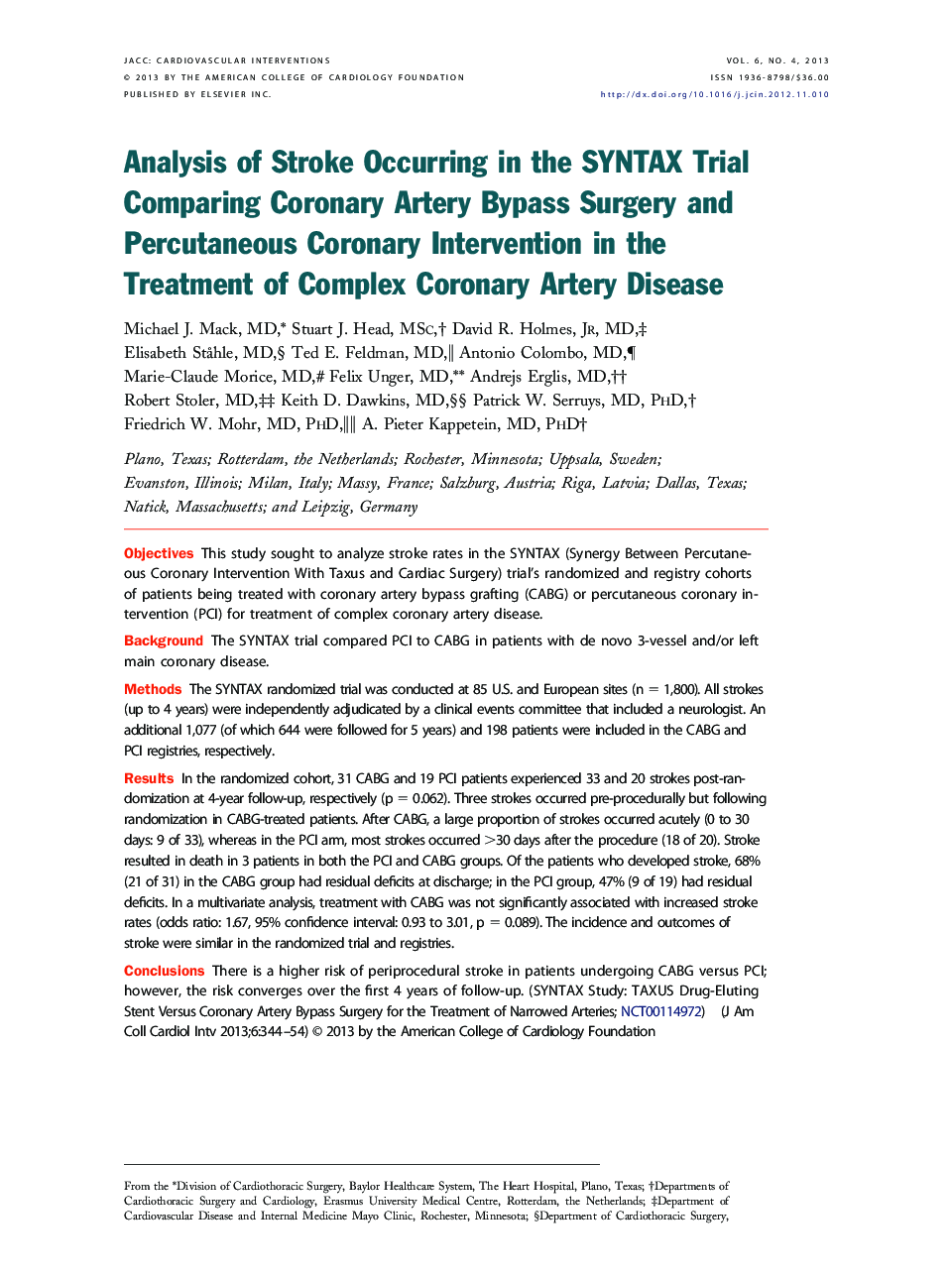| کد مقاله | کد نشریه | سال انتشار | مقاله انگلیسی | نسخه تمام متن |
|---|---|---|---|---|
| 2940346 | 1177027 | 2013 | 11 صفحه PDF | دانلود رایگان |

ObjectivesThis study sought to analyze stroke rates in the SYNTAX (Synergy Between Percutaneous Coronary Intervention With Taxus and Cardiac Surgery) trial's randomized and registry cohorts of patients being treated with coronary artery bypass grafting (CABG) or percutaneous coronary intervention (PCI) for treatment of complex coronary artery disease.BackgroundThe SYNTAX trial compared PCI to CABG in patients with de novo 3-vessel and/or left main coronary disease.MethodsThe SYNTAX randomized trial was conducted at 85 U.S. and European sites (n = 1,800). All strokes (up to 4 years) were independently adjudicated by a clinical events committee that included a neurologist. An additional 1,077 (of which 644 were followed for 5 years) and 198 patients were included in the CABG and PCI registries, respectively.ResultsIn the randomized cohort, 31 CABG and 19 PCI patients experienced 33 and 20 strokes post-randomization at 4-year follow-up, respectively (p = 0.062). Three strokes occurred pre-procedurally but following randomization in CABG-treated patients. After CABG, a large proportion of strokes occurred acutely (0 to 30 days: 9 of 33), whereas in the PCI arm, most strokes occurred >30 days after the procedure (18 of 20). Stroke resulted in death in 3 patients in both the PCI and CABG groups. Of the patients who developed stroke, 68% (21 of 31) in the CABG group had residual deficits at discharge; in the PCI group, 47% (9 of 19) had residual deficits. In a multivariate analysis, treatment with CABG was not significantly associated with increased stroke rates (odds ratio: 1.67, 95% confidence interval: 0.93 to 3.01, p = 0.089). The incidence and outcomes of stroke were similar in the randomized trial and registries.ConclusionsThere is a higher risk of periprocedural stroke in patients undergoing CABG versus PCI; however, the risk converges over the first 4 years of follow-up. (SYNTAX Study: TAXUS Drug-Eluting Stent Versus Coronary Artery Bypass Surgery for the Treatment of Narrowed Arteries; NCT00114972)
Journal: JACC: Cardiovascular Interventions - Volume 6, Issue 4, April 2013, Pages 344–354